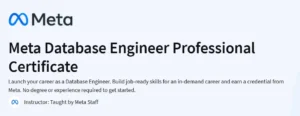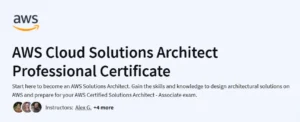What will you learn in Introduction to Ruby on Rails Course
Understand the fundamentals of Ruby on Rails and its convention-over-configuration philosophy
Explore the Model-View-Controller (MVC) architecture to structure Rails applications effectively
Create and run Rails migrations to evolve your database schema safely
Perform CRUD operations using Active Record models and validations
Configure routes, controllers, and views to wire up your application’s UI and business logic
Write and run tests for models, controllers, and views to ensure application quality
Program Overview
Module 1: Introduction to Ruby on Rails
⏳ 1 hour
Topics: What is Rails? Project setup,
rails server, Rails design pattern, “Hello World!”Hands-on: Initialize a new Rails project, explore the folder structure, and deploy your first app
Module 2: CRUD on Rails
⏳ 2.5 hours
Topics: Models & Active Record, migrations & methods, validations, DRY principles
Hands-on: Build a full CRUD application in three parts—create/read, update/delete, and validation challenges
Module 3: Your First Rails Application!
⏳ 3 hours
Topics: Routes, views, and controllers; user authentication; “acts_as_votable” voting features
Hands-on: Develop a basic app with user signup/sign-in, voting, and conditional views
Module 4: Comments Functionality
⏳ 2 hours
Topics: Associations, nested routes, partials, and form handling for comments
Hands-on: Implement commenting with create/display workflows and UI partials
Module 5: Testing Rails Applications
⏳ 2 hours
Topics: Introduction to Rails testing, assertions, model/controller/integration tests
Hands-on: Write and execute tests for models, controllers, and views to validate functionality
Module 6: Conclusion & Next Steps
⏳ 0.5 hour
Topics: Course wrap-up, deploying to production, resources for deep dives
Hands-on: Review a checklist for going live and plan your next Rails project
Get certificate
Job Outlook
Average U.S. Salary: $122,113 per year for Ruby on Rails developers
Employment Growth: Software developer roles (including Rails) projected to grow 17% from 2023–33
High demand in tech startups, e-commerce, fintech, and SaaS for rapid web application development
Roles include Rails Developer, Full-Stack Engineer, and Backend Engineer with strong remote opportunities
Specification: Introduction to Ruby on Rails Course
|
FAQs
- Basic understanding of programming concepts is helpful but not mandatory.
- Familiarity with Ruby (the language) accelerates learning Rails.
- HTML, CSS, and JavaScript basics can improve comprehension of web development aspects.
- The course starts with foundational Rails concepts for beginners.
- Non-technical learners can succeed with dedication and hands-on practice.
- Web Developer or Full-Stack Developer roles are common opportunities.
- Startups often prefer Rails for rapid web application development.
- Freelance web development and consulting projects become accessible.
- Knowledge of Rails enhances resumes for software engineering positions.
- Skills can complement other web technologies like React or Node.js.
- Includes building simple web applications to learn CRUD operations.
- Students practice connecting databases and managing backend logic.
- Focuses on MVC (Model-View-Controller) architecture for scalable apps.
- Encourages development of portfolio-ready projects.
- Hands-on coding exercises simulate workplace web development scenarios.
- Certified or skilled Rails developers are in demand for web projects.
- Opens opportunities for higher-paying roles in startups and tech firms.
- Freelance and contract work for Rails projects often pays well.
- Combining Rails with front-end frameworks can further increase earning potential.
- Knowledge of Rails demonstrates full-stack development capability to employers.
- Some programming familiarity is beneficial; complete beginners may need extra effort.
- Focus is on practical web development concepts rather than deep computer science.
- Learning-by-doing approach helps non-technical learners understand app development.
- Rails simplifies web app development, reducing the need for complex coding.
- Supplementary materials and guided projects make it accessible for motivated learners.





